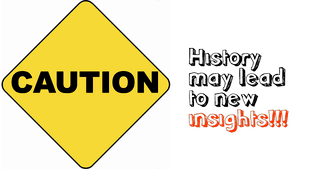
|

|
| This Web Site is dedicated to the Memories & Spirit of the Game as only Ken Aston could teach it... |
| Enjoy, your journey here on... KenAston.org |
| Ken Aston Referee Society ~ Football Encyclopedia Bible |
William Pickford
|
| Source - References |
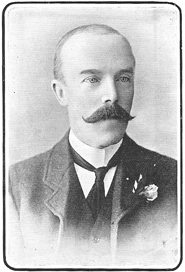 William Pickford |
| William Pickford worked as a
journalist for The Athletic News under the editorship of James Catton.
He was also a member of the Council of the Football Association. In 1905
he joined forces with Alfred Gibson to publish Association Football and
the Men Who Made It. |
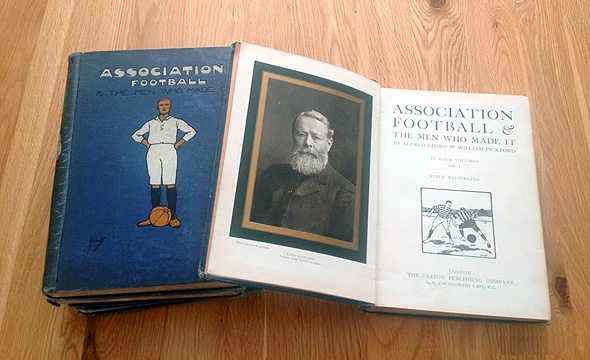 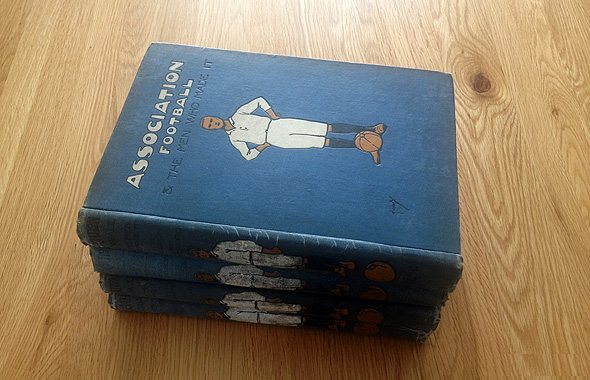 Association Football & The Men Who Made It Co-Authored by... Alfred Gibson and William Pickford. |
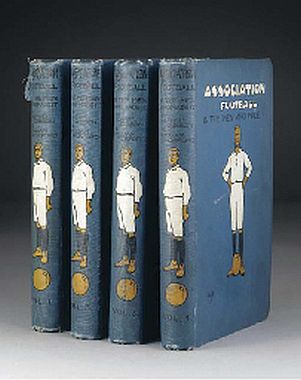 The holy grail for any serious collector of football literature, this work is unrivalled in affording the contemporary reader a detailed understanding of the teams, players and administrators who dominated the game in the nineteenth century. Set across four volumes, the figures profiled inside are almost universally forgotten to modern football fans and yet the calibre of the writing within makes them come alive. Even though the game they played was markedly different to that of the current day, the vitality and energy of the era is clear. If you have upwards of £500 lying around you could do far worse than making an investment in this classic tome. |
|
There have been many great books published about football over its long
history, but the most-sought after is surely Association Football & The
Men Who Made It by Alfred Gibson and William Pickford. Published in four
volumes, it’s a lavish and comprehensive guide to the early game.
Arguably the best ever football book, it’s more than 100 years old, and
pretty rare and valuable. We’ve been fortunate enough to get hold of a
copy for look inside its covers. Although not strictly Victorian (it was published in 1905/06 by the Caxton Publishing Company), it covers the Victorian origins of football, and was one of the first major works of literature to be devoted to the game. According to the author and football memorabilia collector Hunter Davies, the four volumes of Association Football are “the best books on football ever written. They’re the best produced, the best published, with the best photographs and best information.”[1] They’ve been described as the “most desirable” football books,[2] and are regularly valued at upwards of £500.[3] So what makes Association Football so special? “So far Association Football has had no voice commensurate with its claims,” write Gibson and Pickford in their introduction to the book. “During the last twenty years the game has developed in such a remarkable manner that the literature on the subject has failed to keep pace with it. No game has ever taken so deep a hold on the public imagination. Its kingdom grows from year to year, and its thrall extends to all sections of society. The microbe of football is more virulent and more persistent than any other of its kind. It grows by what it feeds on. Once it gets into the blood nothing can root it out.” There had been many previous books about football, and of course newspapers and magazines wrote reams of pages about the game. It was the authors intention that Association Football would be a permanent and complete record of the game’s history and development. “The game has grown by leaps and bounds, but its literature is by no means equal to the demands of its devotees,” they write. “It is with the desire to supply in some measure the urgent need of the age that this book has been produced.” The authors were well-placed to produce an authoritative football book. Alfred Gibson was a respected sportswriter who was known to readers of popular paper the Football Star by the pen name “Rover”. William Pickford was an influential Football Association council member who would later become president of the FA and vice-president of FIFA. But Gibson and Pickford also include contributions in Association Football from numerous footballers and football administrators. The first volume is largely concerned with the history of the game, covering its antiquity, the formation of the Football Association, the age of the amateurs, and the rise of professionalism. Volume 2 features an essay on the history and future prospects of the Football League written by League founder William McGregor. It also features potted histories of the country’s most famous clubs, which continue into subsequent volumes. Volume 3 looks at football in Scotland, Wales and Ireland, and has essays on the history of international football and the FA Cup. Volume 4 features a piece on football referees, and profiles of members of the FA council. Alongside club histories, each volume contains in-depth profiles of some “Giants of the Game”, and many of the names featured will be familiar to modern fans. They include famous Victorian players such as Steve Bloomer, John Goodall and Nick Ross – as well as some players who might not be so well-known. We learn of Bloomer’s “hurricane rush and cannon shot”, and how Goodall played football that was “both artistic and intellectual”. Of Preston’s Nick Ross, the authors say, “he possessed the indefinable something, the magic quality which, for lack of a better word, we call genius.” Nick Ross had been dead for more than a decade by the time Association Football was published. He died from tuberculosis in 1894 aged just 31. But other early football stars were involved in the production of the book. Steve Bloomer contributes an essay on how to score goals (“do not hesitate to shoot”), and Billy Meredith writes about wing play – and rails against arm-chair critics”: “The mistake which many of our good critics make is that they do not realize many of the things which make it necessary for the player to do precisely the opposite to what the spectators think should be done.” Leigh Richmond Roose contributes an essay entitled The Art of Goalkeeping. “An experience of the game leads one to the belief that to a great extent a goalkeeper is born, not made,” he writes. Aside from the fact that Association Football provides much valuable insight into the Victorian and Edwardian roots of football, another reason it is so valuably treasured is that it is a beautifully produced book. Inside the embossed cloth covers are lavishly illustrated pages that are a delight to browse. The four volumes contain more than 100 full-page plates plus around 100 in-text photos featuring player portraits, team line-ups and match action shots. Many of these photos are absolute gems, and some would be very valuable as individual items. Indeed, one of the reasons that decent copies of Association Football are so rare is that owners have removed plates from the books to keep or sell individually. So how can you get hold of this fantastic book? Well, you’re more likely to find it at an auction house than on Amazon. Bonhams has sold several sets over the past few year, ranging in price from £216 up to £800. Christies sold a set in June 2012 for £875, but they were an unusual set bound into two volumes. At the time of writing, there are six of the four-volume sets listed on Abebooks ranging in price from £500 to £862. So the book is available if you’re looking to make an investment. |
| Source - References |
|
(1) William Pickford and Alfred Gibson, Association Football and the Men Who Made It (1905) This wonderful Association forward has been at once the delight and despair of countless thousands. To watch Templeton at his best is a sight for the gods; to watch him at his worst is to see at a glance the frailty of things human. Templeton has two styles; but happily one of them - the best - is generally uppermost. He is like the boy of whom the nurse said, "When he is good, he is very, very good, and when he is bad, he is horrid." Templeton is afflicted with a large measure of the eccentricity of genius. He is a man of moods. When "the afflatus" is upon him he is a winged horse to whom a spur is useless, and whom a curb cannot hold. It is then that the watching multitude is aflame with mingled surprise and admiration - surprise at the wondrous versatility of the man, admiration at the grace and beauty of his movements. There is nothing of the steam-roller about his methods. He is more like "a fawn playing with the shadows." He dances airily out and in amongst his opponents, threading his way by devious steps, which no one can anticipate and no one can stop. Tall, thin, gracefully built, he has the easy action of the accomplished dancing-master, and all the slimness of a Sherlock Holmes. There is the quality in his rush along the wing which one can only associate with a flash of lightning. He is irresistible, not because he bores his way through the opposition, but because he evades it. He will never attempt to go through a man if there is a way round him. He does not overcome obstacles so much as he ignores them. If there be a stumbling-block in his path he will contrive to make stumbling blocks look foolish. A sort of human eel, he twists and twines his way through all opposition without so much as touching it. With easy, prancing step he waltzes hither and thither, while the discomfited enemy gazes in silent rage and admiration. No forward ever had such power of making an opponent look foolish. A big back may rush at him, determined to take "man or ball," but Templeton with the dark locks, by a quick movement of the body, eludes his pursuer, who mayhap is measuring his length on the ground, while Robert is careering up the field in quest of goal. Unfortunately Templeton has also the defects of his qualities. If the afflatus be absent, if the mood be wrong, if the task be uncongenial, if he meet with some unexpected check all his wit, all his cleverness, all his electric flashes seem to desert him, and lie becomes a hapless, helpless spectator of a game which in happier circumstances he would be likely to dominate. He has one quality, however, which stamps him as a player of the best class. In big games, in times of real responsibility, he usually shows his best form. He has played some marvelous games for Scotland against England. A partner who understands him, or at least who is fairly sympathetic to his methods, is almost necessary to his success. At times he has played some of his great games without reference to a partner, or indeed to any one on the field, but, as a rule, a bad partner upsets his mental equilibrium, and he is finished for the day. The complaint is frequently made that lie is too individual - too selfish, some say, for the needs of modern football. There is some truth in the criticism, but one might with justice retort that Templeton with all his faults is frequently of more service than painstaking mediocrity. On the other hand, to find Templeton in one of his inspired moods, when he flashes forth on his conquering career, is to find one of the most fascinating forwards ever seen on a football field. He is a man who must be "nursed," who must be led by silken strings, who must be allowed to develop his game in his own way. He is unlike in manner and method any other footballer of the present day, although his partner in the Woolwich Arsenal ranks - Tom Fitchie - is a man after his own heart. Both men make for subtlety rather than for force. Both are clever dribblers, although Fitchie is stronger on his legs. The two, however, are eminently suited for each other, and Templeton has played some of his best games for the Arsenal club. The strong point of Templeton is the amount of ground he can make, and his ability to centre the ball accurately. Playing as lie usually does at outside left, he does not score many goals himself, but he is the fruitful source of scoring by others. |
| +-+ BACK TO TOP +-+ | |